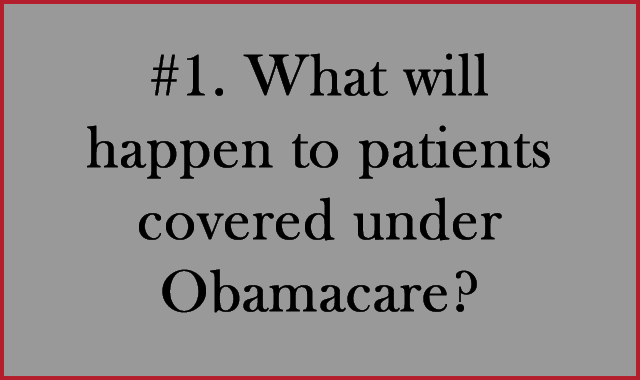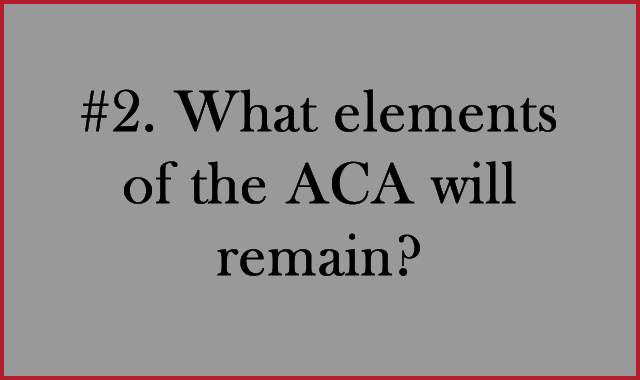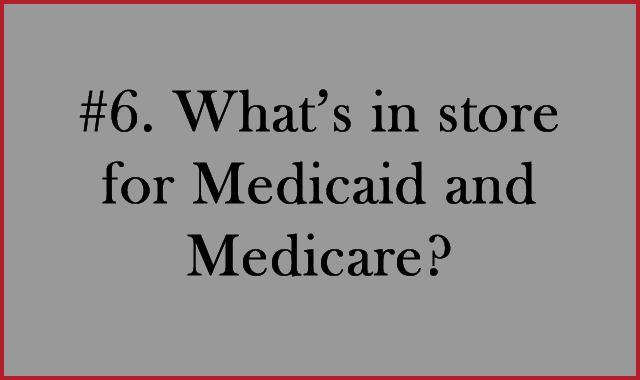How will Trump change healthcare? 6 of the biggest questions answered
Experts share how Trump could change Obamacare coverage, accessibility, affordability, Medicare/Medicaid, price transparency, and more.


Throughout his campaign and in the days following the election, President-elect Donald Trump said that one of his top priorities as the commander in chief would be to repeal and replace Obamacare, a major component of the Affordable Care Act (ACA). By having a Republican president as well as the GOP holding a majority in Congress (which also support its repeal), it’s likely that this will occur, says Ashraf Shehata, MBA, advisory leader for health plans and partner of the firm’s Global Healthcare Center of Excellence, KPMG.
But how do you go about replacing Obamacare when 20 million Americans are now obtaining healthcare coverage from it?
Next: What will happen to patients covered under Obamacare?



WolfsonJay Wolfson, DrPH, JD, professor of public health, medicine and pharmacy and associate vice president of health policy, law and safety, USF Health, University of South Florida, believes that most likely there won’t be any sudden guillotine expunging core features of Obamacare for current participants. Rather, it will be subject to planned actuarially sound and calculated transitions over the course of 2017.
“Individuals currently covered have contracts for their healthcare benefits which I think insurance companies will honor,” he says. “But a year from now, things will be different. Some people may find themselves going to emergency rooms and community clinics for care because they no longer have, can’t continue to afford, or will not be penalized for not having health insurance.”
Shehata also believes that a change in healthcare will take time. “The effect of any prospective repeal won’t be felt until 2018 at the earliest, and it’s too early to speculate what form the replacement will take,” he says.
Next: What elements of the ACA will remain?



DentonSome popular elements of the ACA, including coverage of pre-existing conditions and extending coverage to children under a parent’s plan until they are 26 years old, may remain in the replacement, which Trump stated in an interview with TheWall Street Journal a few days after the November 8 election.
Bill Denton, MBA, RN, chief operating officer, Novia Strategies, Inc., a national healthcare consulting firm, also believes some of ACA’s components would stay intact, such as a continued shift from volume to value-based care. “ACA has been driving the transformation of healthcare delivery in the United States by incentivizing healthcare providers to provide the highest quality care at the lowest possible cost,” he says. “Healthcare providers will still share the goal of developing high standards of care that allow practitioners to individualize care to their patient population, reduce the wide variation of care that can drive up costs, seek ways to reduce labor and non-labor costs, and improve revenue capture.”
Next: What about accessibility?


During his campaign Trump touted free market competition. In addition to allowing health insurance companies to compete across state lines, a Trump administration may consider tax incentives rather than penalties in an effort to encourage people to purchase insurance, according to his healthcare position page. For example, health savings accounts may be expanded to offer a more attractive and accessible option for individuals to fund healthcare coverage, Denton says.
But if insurance companies are permitted to sell their products across state lines and benefit plan restrictions are eliminated to permit individuals to purchase only the coverage components they need, access to covered health services could remain an actuarial and funding source challenge for those not able to afford policies or for whom employers do not purchase coverage, Wolfson says.
Next: How about affordability?


In addition to expanding health savings accounts and allowing health insurance to be sold across state lines, Trump has promoted ideas during his campaign and on his position page such as deducting health insurance premiums from personal taxes, requiring all providers to improve price transparency, implementing block grants for Medicaid, and allowing the re-importation of cheaper drugs from overseas, which would all change payment models and might improve affordability, Denton says.
Taking a closer look at price transparency, Trump’s plan would require all healthcare providers to post the cost of medical procedures. “This would allow consumers to shop around for the best prices, potentially making such procedures more affordable,” Denton says. “Recently, we’ve seen an increased focus on quality transparency, so assuming that this continues, the combination of quality and price transparency could increase competition among providers as they seek to maintain or increase patient volumes.”
Next: What about MACRA and other recently finalized rules?


It’s unlikely that a Trump administration will significantly change the Medicare Access and CHIP Reauthorization Act (MACRA). “Focused on physician reimbursement, MACRA is attempting to increase value by defining and implementing improved quality metrics and creating penalties and bonuses to incentivize physicians to make more cost-effective decisions,” Denton says. “It will be imperative that a significant focus remains on physicians to drive best demonstrated practices, i.e., which care decisions are proven to have the best outcomes, and as a profession providing care that delivers the best outcomes.”
Medicare Spending Per Beneficiary (MSPB), part of The Improving Medicare Post-Acute Care Transformation (IMPACT) Act, is another CMS regulation that shifts providers from volume to value, which Denton does not expect to change. “This new regulation spans the healthcare continuum and further drives the need for cost reduction and clinical redesign across the full continuum of care-from pre-hospitalization into the acute-care environment and after discharge into post-acute care,” Denton says. “With MSPB, it is widely acknowledged that controlling the use of the post-acute continuum is essential.”
Next: What’s in store for Medicaid and Medicare?

While the specifics are not yet clear, a combination of block grants to states and increased flexibility at the state level appear to be the direction that Medicaid is headed, Wolfson says, and vice president-elect Mike Pence can offer states practical guidance based on his work as governor of Indiana. Furthermore, a Trump administration might open pharmaceutical markets to overseas drug purchasing for consumers, creating more competitive purchasing of pharmaceutics for both Medicaid and Medicare. Outcomes-based reimbursement will significantly affect Medicare costs, and reporting of pricing and outcome data will encourage the market transparency Trump advocates.
Predictions for the future healthcare landscape

ShehataFree market principles and increased competition among payers, combined with potential quality-related incentives, may hasten the speed at which providers focus on quality improvement initiatives, Denton says. “However, much of the effort to improve quality will likely come through the industry’s own commitment to the Institute for Healthcare Improvement’s Triple Aim, which is to provide better care for individuals, better health for populations, and lower per capita costs,” he says. “Hospitals and systems will continue to work hard to substantively improve the quality of care through reducing clinical variation and avoidable medical errors, among other measures.”
Shehata points out that certain factors pertaining to quality transcend politics. “One of the byproducts of the technological investments in healthcare has been an improvement in the ability to measure quality; payers of all types have been looking to tie reimbursement to quality,” he says. “Also, consumers are demanding more quality and transparency from providers when making healthcare decisions.”
Karen Appold is a medical writer in Lehigh Valley, Pennsylvania.
In this episode of the "Meet the Board" podcast series, Briana Contreras, Managed Healthcare Executive editor, speaks with Ateev Mehrotra, a member of the MHE editorial advisory board and a professor of healthcare policy and medicine at Harvard Medical School. Mehtrotra is also a hospitalist at the Beth Israel Deaconess Medical Center in Boston. In the discussion, Contreras gets to know Mehrotra more on a personal level and picks his brain on some of his research interests including telehealth, alternative payment models and price transparency.
Listen








